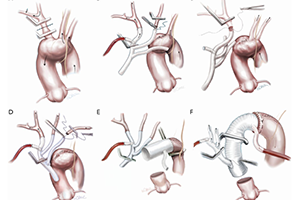Total aortic repair: the new paradigm in the treatment of acute type A aortic dissection
Abstract
The surgical management of acute type A aortic dissection (ATAAD) is in a period of rapid evolution. Understanding the complex physiology and anatomy of both acute and chronic dissection has been enhanced by the ready availability of state of the art imaging techniques. Technical advances in the intraoperative monitoring of organ perfusion, together with adjuncts to limit organ injury and increasing sophistication in open and endovascular surgery have led to a major reduction in both perioperative morbidity and mortality. In many centers, there has been a transition in mindset and surgical approach away from a purely central aortic operation focusing on the ascending aorta and a ‘live to fight another day’ philosophy. The current more global perspective recognizes the importance of aortic valve function, malperfusion, false lumen (FL) patency and the potential for future complex aneurysm development. The time is now right to transition into the next phase of sophistication in the management of ATAAD with the aim of achieving not only a safe acute operation, but to either entirely prevent chronic complications or to greatly simplify their management by the creation of an anatomical situation that facilitates future endovascular intervention in place of complex re-do surgery. We present our view on the evolution of surgery for ATAAD leading to our current technique of Branch First Arch replacement and Total Aortic Repair, which not only provides a safe immediate operation, but also offers the hope of a simplified future management if not a total cure for the pathology.
Cover






